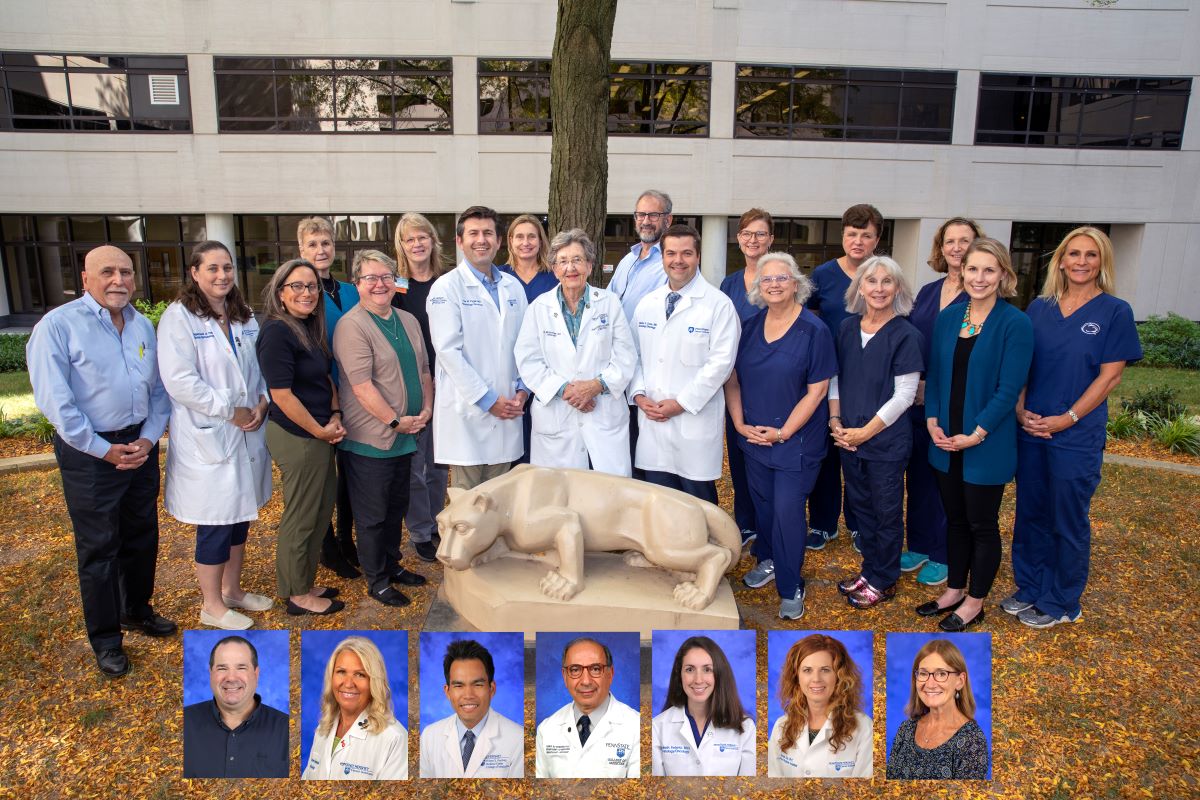Hemophilia Treatment Center of Central Pennsylvania celebrates 50th anniversary

In its 50 years of existence, the Hemophilia Treatment Center of Central Pennsylvania at Penn State Health Milton S. Hershey Medical Center has led a major breakthrough in the treatment of hemophilia, enrolled 1,154 patients with inherited bleeding disorders and provided care to patients from birth to death. The Milton S. Hershey Medical Center established the center in March 1973 under the leadership of Dr. M. Elaine Eyster.
In 1965, Dr. Judy Pool, a physiologist, developed a method for separating the antihemophilic factor, or factor VIII, which is used for transfusion to correct the bleeding defect in hemophilia, from blood plasma. She was then able to create a cold-insoluble protein fraction of whole blood plasma. This concentrate could be refrozen and stored up to a year, allowing hemophiliacs to be treated more easily than ever before.
Before that time, people with severe hemophilia had a median life expectancy of 19 years. Those who survived into adulthood experienced debilitating joint disease due to repeated bleeding episodes. Today they have a near normal life expectancy and good quality of life.
Originally known as the Harrisburg-Hershey Hemophilia Center, it was one of nine state-funded hemophilia treatment centers in Pennsylvania when it was established. By 1976, it had 113 patients. As of August 2023, that number has grown to 566 active patients across 38 counties in Pennsylvania.
The Hemophilia Treatment Center provides lifelong care to patients diagnosed with genetic bleeding disorders, including Hemophilia A, Hemophilia B, von Willebrand disease, Hypofibrinogenemia, and rare factor deficiencies.
The center’s comprehensive medical care includes:
- Patient/family diagnosis and treatment
- Patient/family education
- Management of acute bleeds
- Preparation for surgical procedures
- Research
- Preparation for dental work
- Bleeding disorder medication management
- Psychosocial assessment and support services
- Outreach to communities
- Assistance with navigating community resources
- Insurance navigation and financial support
- Connecting patient/family to bleeding disorders community resources
To learn more, see the Hemophilia Treatment Center of Central Pennsylvania website.
If you're having trouble accessing this content, or would like it in another format, please email Penn State Health Marketing & Communications.
